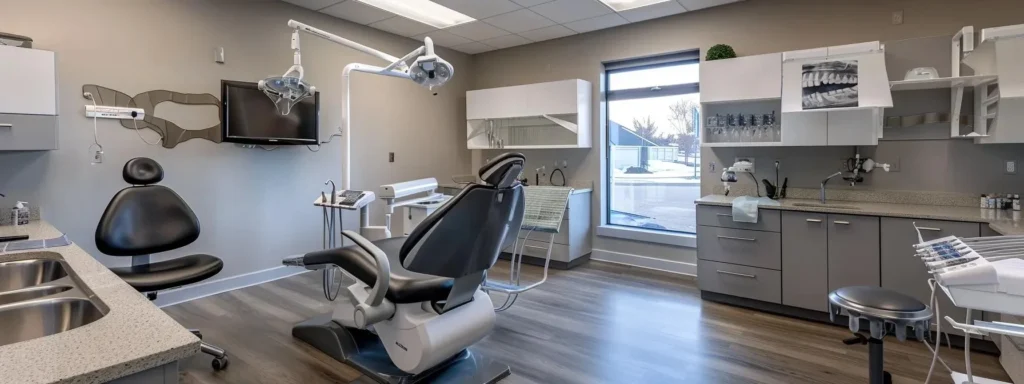Maintaining bone health is critical for the stability and longevity of dental implants. Three key factors contribute to bone loss: the biological role of the jawbone, the osseointegration process, and the influence of systemic health conditions.
The jawbone’s health directly affects the success of dental implants. Resembling the roots of natural teeth, implants require a strong and dense jawbone for support. In the absence of natural tooth roots, the bone can deteriorate, emphasizing the importance of regular stimulation through chewing activities or prosthetic means to preserve bone density and volume.
Successful osseointegration is essential for implant stability. This biological process involves the direct bonding of the implant with the bone. Should osseointegration be compromised, whether due to surgical technique, implant materials, or immediate load-bearing, the surrounding bone may weaken, which leads to implant failure. Careful surgical planning and postoperative care are thus essential in preventing osseointegration-related bone loss.
Systemic conditions such as osteoporosis and periodontal disease significantly influence bone strength. Osteoporosis, a condition characterized by bone density loss, can jeopardize implant stability, while untreated periodontal disease can lead to inflammation and deterioration of both soft and hard tissues. Managing these conditions is a fundamental part of comprehensive dental care and implant success, requiring close collaboration between healthcare providers and patients.
Understanding the Impact of Bone Loss on Patients
The repercussions of bone loss in dental implant patients are complex, affecting not just oral health but overall well being. A patient-focused approach like that of Laguna Heights Dental considers the functional, emotional, and personal dimensions of bone loss.
Bone loss around implants can impact more than just the structural stability of the implant; it can also alter a person’s facial contours and appearance. When the jawbone recedes, it may affect how a person’s face looks and functions, potentially leading to speech or eating difficulties. Moreover, changes in appearance can affect a person’s self image and confidence, emphasizing the importance of maintaining bone density for both health and aesthetic reasons.
Early detection of bone loss is crucial for managing its progression and reducing adverse outcomes. Identifying signs early means that interventions, such as adjustments to the implant or targeted treatments, can be implemented swiftly:
- Functional impact: Bone loss can affect facial contours, speech patterns, and eating capabilities
- Aesthetic concerns: Changes in jawbone structure may alter facial appearance and self-confidence
- Early intervention: Prompt detection allows for swift treatment to prevent progression
- Personalized care: Individual treatment plans address unique patient circumstances and needs
Every patient’s situation is unique, which is why individualized care plans are fundamental to effective treatment. By tailoring therapy and support to the specific circumstances and needs of each person, care providers can ensure the best possible outcomes. This patient’s first approach builds trust and supports better health.
Preventing Peri Implantitis Through Proactive Care
Peri implantitis prevention is essential to maintain the integrity of dental implants. The primary strategies include patient education on oral hygiene, routine dental examinations for early infection detection, and management of lifestyle risk factors.
Educating patients on proper oral hygiene is vital in preventing peri implantitis. This involves demonstrating effective brushing and flossing techniques specific to dental implants, emphasizing the need for regular cleaning to remove plaque and bacteria that could cause infection. Informing patients about the symptoms of peri implantitis also ensures they seek prompt professional advice if problems arise.
Routine dental visits play an essential role in the early identification of peri implantitis. During checkups, dental professionals can detect subtle signs that may indicate the onset of an infection. By diagnosing peri implantitis early, timely interventions such as localized therapy or adjustments to oral care routines can be initiated, reducing the likelihood of bone loss and implant failure.
Addressing personal risk factors such as smoking and poorly controlled diabetes is another proactive measure against peri implantitis. Smokers and diabetics have a higher risk of gum diseases; therefore, Laguna Heights Dental works with patients to manage these risks. This can include offering smoking cessation resources or collaborating with medical professionals to ensure diabetes is under control. These preventive steps help safeguard implant longevity.
Implementing Preventative Measures for Long-Term Success
Effective preventative care for dental implants depends on three key approaches: individual risk assessment, patient education, and ongoing engagement in best care practices. Evaluating each patient’s unique risk factors is crucial in creating a tailored preventive strategy. This assessment includes analyzing a patient’s medical history, lifestyle choices, and current oral health status. From this, dental professionals can recommend specific hygiene routines designed to reduce potential risks, ensuring the preservation of bone health around the implants.
Informed patients are better equipped to maintain their dental implant health; thus, education is a vital component of preventive care. By understanding the mechanics of how implants integrate with the jawbone and the factors that can compromise their stability, patients are more likely to adopt and follow beneficial oral hygiene practices.
Continuous education on best practices is key to sustained patient engagement. This involves regular communication about the latest care techniques, reinforcement of the importance of maintaining regular dental checkups, and providing support and motivation for patients to remain committed to their oral care routines. Active and informed participation of patients in their dental care supports the success and longevity of their dental implants.

Strategic Response to Implant Risk Factors
Addressing the risks that endanger the integrity of dental implants requires a structured strategy involving the identification of risk triggers, routine dental evaluations, and the use of diagnostic tools to inform timely interventions and care escalation when necessary.
Acting swiftly when facing potential threats to implant stability is important. Recognizing early signs of bone loss can dramatically impact long term outcomes. By identifying specific triggers such as changes in bite dynamics or signs of infection, interventions like adjustments to the implant or targeted therapies can be initiated at the earliest stage, preventing further complications.
Regular dental checkups play a crucial role in safeguarding implant health. Recall appointments are not just a formality; they’re a necessity for ongoing assessment of oral health:
- Early risk detection: Swift identification of bone loss triggers enables prompt intervention strategies
- Regular monitoring: Scheduled checkups provide ongoing assessment and care adjustments as needed
- Advanced diagnostics: Modern tools detect subsurface issues before they become visible symptoms
- Proactive management: Preventive approach maintains highest standards of patient care and outcomes
Modern diagnostic tools provide an additional layer of defense in the fight against implant related bone loss, detecting issues beneath the surface that may not yet be visible or causing symptoms. These tools allow clinicians to intervene sooner, supporting more predictable results.
Leveraging Technology for Better Outcomes
In the realm of dental implant care, innovation is not just beneficial but necessary. By integrating advanced diagnostic imaging and regenerative therapies, while keeping current with the latest developments, dental professionals can significantly enhance patient treatment outcomes.
At the forefront of diagnostic innovation, imaging techniques such as cone beam CT scans provide detailed visuals of the jawbone structure, allowing for precise assessments of bone health. This level of accuracy is instrumental in determining the most effective treatment plan, as it helps clinicians to identify areas of concern early on and take appropriate action to prevent further bone loss.
Regenerative therapies, such as bone grafting, play a vital role in restoring bone that has been lost. These procedures can stimulate new bone growth, creating a solid foundation for dental implants. The successful integration of these therapies into patient care plans has opened up new possibilities for those who were previously considered unsuitable candidates for dental implants.
Comprehensive Prevention at Laguna Heights Dental
Laguna Heights Dental employs a comprehensive methodology to prevent bone loss, emphasizing deliberate planning, advanced grafting techniques, and promoting patient adherence to care instructions.
Strategic implant placement is the cornerstone of this approach. Each procedure is carefully mapped out to ensure that dental implants are situated in the most advantageous positions within the jawbone. By optimizing implant placement, clinicians at Laguna Heights Dental aim to facilitate optimal bone integration and stability, which are vital for the lasting success of the implants.
In cases where bone density is insufficient, grafting techniques are utilized to strengthen the jawbone’s structure. These methods allow for the addition of bone or bone like materials to areas that require reinforcement, thus creating a firmer foundation for the implants. By enhancing the natural strength of the jawbone, these grafting procedures play a critical role in reducing the risk of bone loss.
Patient commitment to following postoperative care guidelines is integral to preventing bone loss. Patients are educated on the importance of oral hygiene, regular checkups, and lifestyle modifications necessary to support their implants. As a result, when patients take an active role in maintaining their dental health, it not only prolongs the life of their implants but also protects the health of their surrounding bone. Education and consistency are key components of success.
Building Success Through Partnership and Innovation
A successful dental implant experience is the product of a collaborative relationship between the patient and dental professionals at Laguna Heights Dental, built on trust, expertise, and innovation.
Trust forms the foundation of the patient dentist partnership. It is critical for patients to have confidence in their dental care providers, feeling assured that the guidance they receive is in their best interest. This mutual trust fosters an environment where patients are more likely to follow through with treatments and recommendations, leading to better implant success rates.
At Laguna Heights Dental, we understand that preventing bone loss around dental implants requires a comprehensive approach that combines advanced technology, personalized care, and ongoing patient education. Call Laguna Heights Dental today to schedule your consultation and discover how our proactive approach to bone loss prevention can help you maintain healthy, stable implants for years to come.
Schedule your consultation Today!
Laguna Heights Dental
30231 Golden Lantern, Ste D
Laguna Niguel, CA 92677
(949) 363-1200
https://lagunaheightsdental.com/
See More Reviews From Laguna Height Dental. View information about local places in our community. Get Driving Directions to Our Practice
Frequently Asked Questions About Dental Implant Bone Loss
What causes bone loss around dental implants?
Bone loss around dental implants is often a result of insufficient jawbone stimulation or complications like peri-implantitis. Good oral hygiene and regular check-ups can be preventive.
Can bone loss around implants be treated?
Yes, dental bone loss can be treated with methods like bone grafting and targeted therapies to improve stability and support long-term implant success.
How can I prevent bone loss around my implants?
Maintain careful oral hygiene, attend routine dental visits for early detection, and follow your dentist’s personalized care plan to prevent bone loss.
Related Articles
Preparing for Dental Implant Surgery, After Care for Implants, Dental Implants Pricing Guide, Implants Vs Traditional dental, Traditional Dental Implants, Dental Implants, Same-Day Dental Implants, Affordable teeth implants





